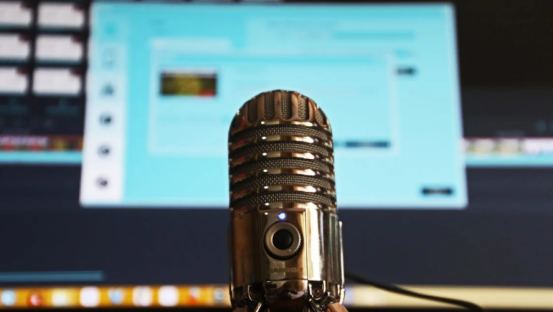What Public Speakers Need to Know About Different Learning Styles

We all have different learning styles, just like we all have different music tastes.
As public speakers, we need to acknowledge these differing learning styles and adapt our communication styles to better cater to them. Otherwise, we’re wasting our time when we try to impart knowledge.
But what are the different learning styles and what do we need to know about them? That’s a good question, and one that we’re going to tackle in today’s article.
And so if you’re ready, let’s get started.
The seven different learning styles
People who are new to learning styles usually assume either that everyone learns in the same way or that there are only a couple of learning styles out there. That’s what I thought before I did the research.
We’re taking a closer look at each of the learning styles as we go through this article, but here’s a quick overview:

1. Visual learners learn with their eyes
Visual learners need to see something to understand it. For example, instead of explaining the structure of a company or organization, they might need to see an organizational chart.
When you’re presenting to visual learners, you’ll want to use as many visual aids as possible. We’re talking about high-quality visuals, bold colors, diagrams, charts, and other goodies that can hold people’s attention. If you can, use a video or two.
Visual learners will also be watching you like a hawk, so be sure to maintain eye contact with your audience and use dynamic body language. If you’re standing in one spot and staring at the floor while you’re talking, you’re going to lose them.
2. Auditory learners learn by hearing things
Auditory learners are the ideal learners for us as public speakers. They pick things up by listening to people—people like us.
That means that there’s not a huge amount for us to bear in mind when we talk to them because we’ll just use the same set of tricks that we normally use. We’re talking about things such as varying your tone and pitch and speaking as clearly as possible so that it’s easy for them to understand your message.
Auditory learners also tend to react well to stories, even more so than the rest of us. That means you can often grab their attention by telling them a story that has a moral to it.
3. Kinaesthetic learners learn through experience
Kinaesthetic learners need to physically hold and interact with things if they want to learn about them. If you’re introducing a new product to them then you’d be better off just giving them the product than arranging a demonstration.
You should provide kinaesthetic learners with something that they can play around with. This can be easier said than done in a public speaking setting, but if there’s something that you can hand out to be passed around the audience, that should help.
Otherwise, try to use tangible, real-world examples, especially if you’re talking about something abstract like a new piece of software. You can also engage kinaesthetic learners by encouraging them to interact throughout your presentation by raising their hands or moving around.
4. Reading/writing learners learn through written materials
Learners who prefer to absorb through reading and writing will get more from your presentation if you provide them with a handout with more information. Be warned, though, that if you give it to them at the start, they’ll spend the entire presentation reading it.
Instead, the best tactic is to let them know at the start of the presentation that you’ll be providing a handout at the end and encouraging them to take notes while you’re talking. Note-taking boosts retention anyway, but it’s particularly useful for reading/writing learners.
You can also better cater to these learners by sharing written summaries of key parts of your presentation or by using lists, as what we’ve done in this article.
5. Social learners learn in groups
Social learners learn best when they’re part of a group, such as working as part of a team or taking part in a group workshop.
This is both a blessing and a curse for public speakers. Yes, your audience inherently forms part of a group, but they’re not working as a group to tackle a problem. From a learning point of view, it’s closer to a one-on-one setting than a group scenario.
So, how can you still engage with social learners? Well, that’s a good question. If you’re talking to a smaller audience then you may be able to use group activities as a part of your presentation. If not, consider creating a Facebook group to bring attendees together after your talk.
6. Solitary learners learn alone
Solitary learners learn best when they’re on their own. You might find that they’re more likely to stay home and read a book than to attend your talk in the first place. Still, you should prepare for them, just in case.
The best way to cater to solitary learners is to provide them with time to reflect, either during or after your presentation. This can work well if you’re able to give them a few minutes before you start answering questions. Because while the solitary learners are reflecting on what you talked about, everyone else can decide what they want to ask you.
Oh, and it’s also a good idea to provide solitary learners with some resources that they can use to study at home. You should consider providing something like that anyway.
7. Hybrid learners bring it all together
Hybrid learners mix two or more of the learning styles that we’ve talked about. And while I don’t have any stats to back this up, I’m pretty sure that they form the largest group of learners.
This is good news for us as public speakers because there’s not too much that we need to do to cater to them. As long as we’re doing something for each of the other types of learners, the hybrid learners should be covered by default.
On top of that, even though hybrid learners favor two or more learning styles, they usually have a preference. When you’re catering to each kind of learner, hybrid learners can pick which learning style they’d like to use.
Conclusion
Now that you know the basics about different learning styles, you’re ready to put what you’ve learned today into practice.
Consider using this new information to adapt the way you deliver your presentations and to tailor your way of talking to the kinds of learners in the room. I’ve even known people to carry out a quick survey at the beginning of their presentation by asking people to put their hands in the air.
Whether or not you do that, the important thing to remember is that as long as you know about the different kinds of learning, you’re much better placed than you were beforehand. And that’s what becoming a world-class public speaker is all about.
Now that you’ve heard from us, we want to hear from you. Did you find today’s tips useful, and is there anything you think we’ve missed?
As always, be sure to let us know your thoughts in the comments so that we can keep the discussion going, and feel free to follow us on your social networking sites of choice for more. We’ll see you soon for another article!




